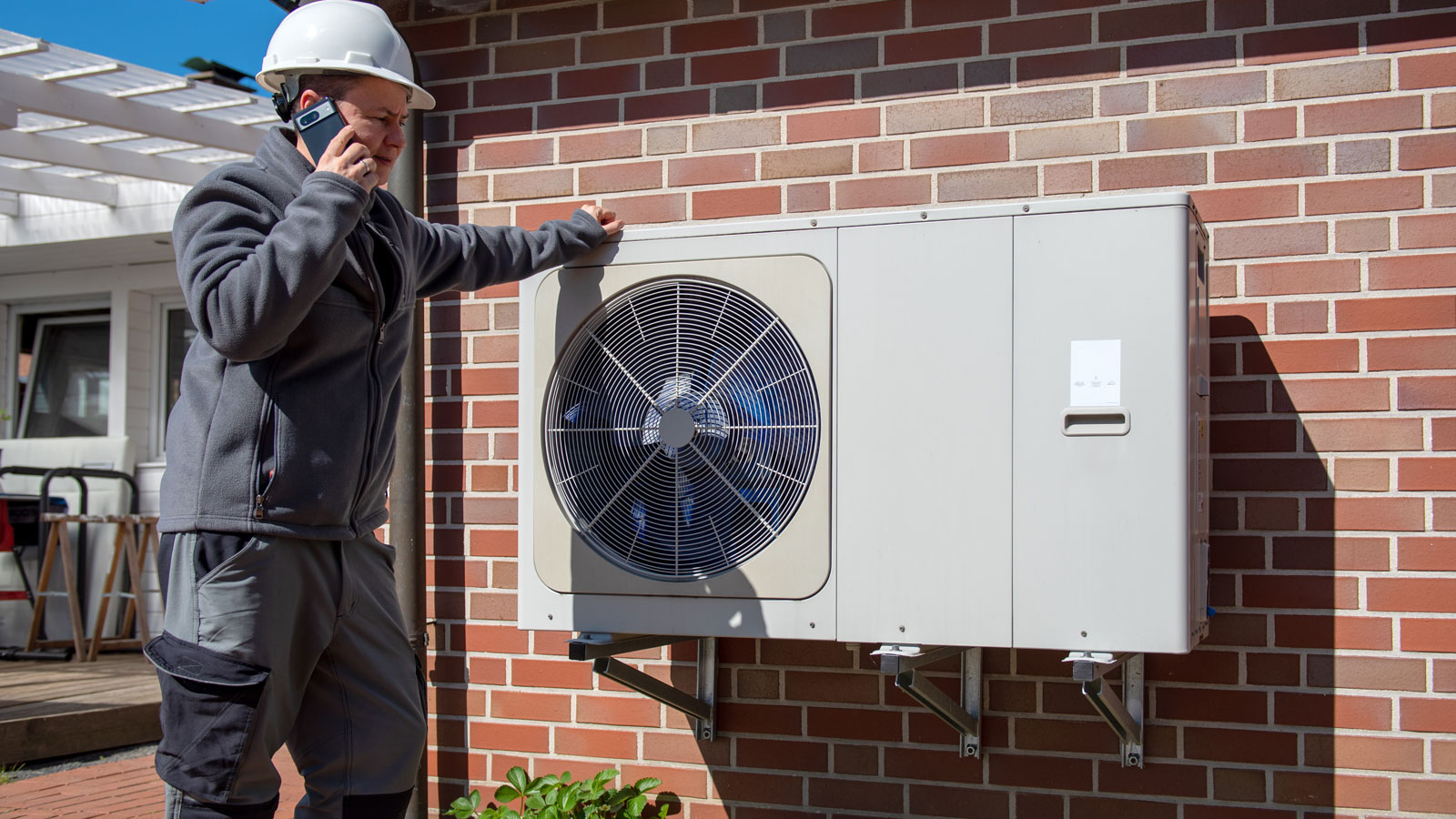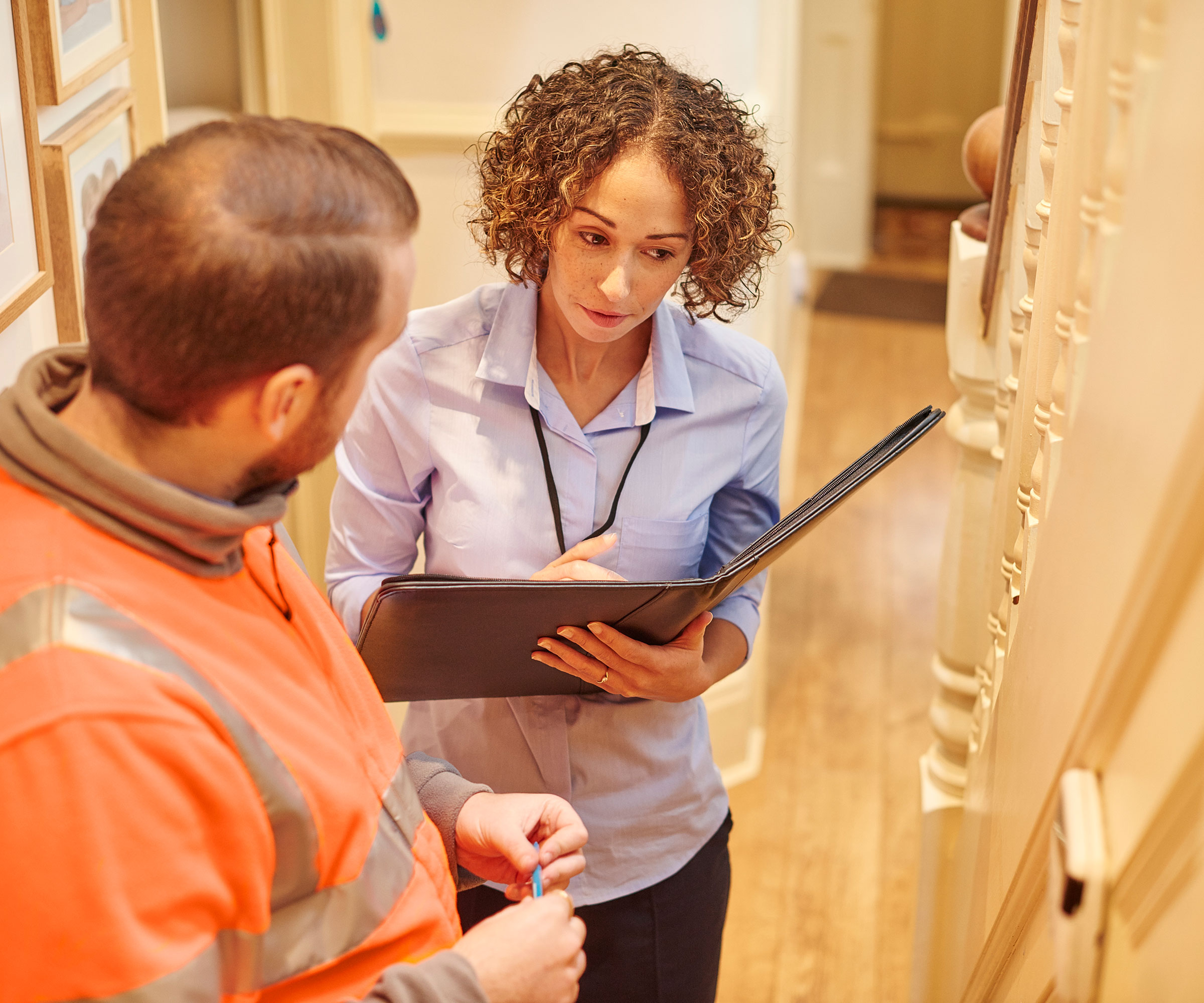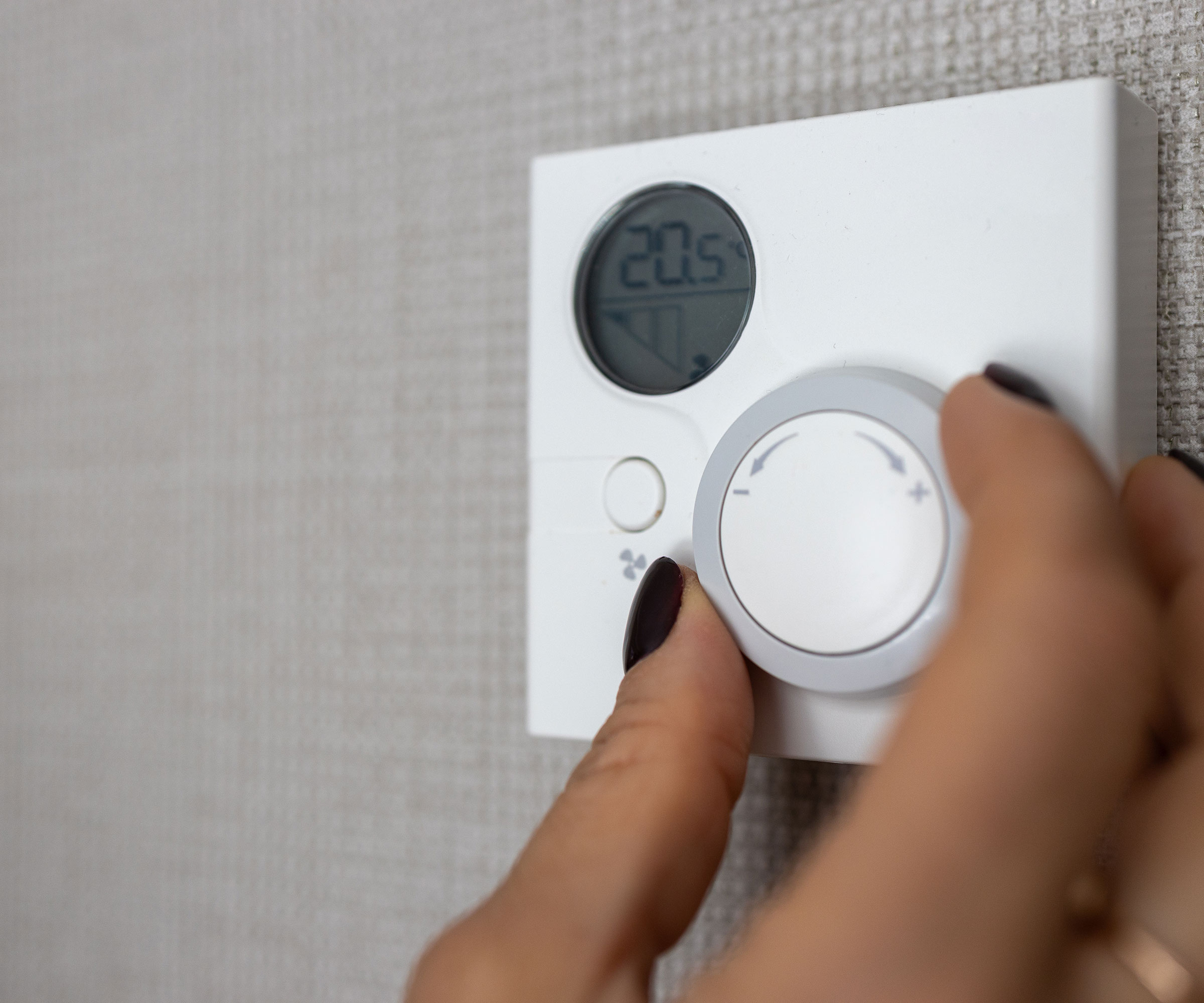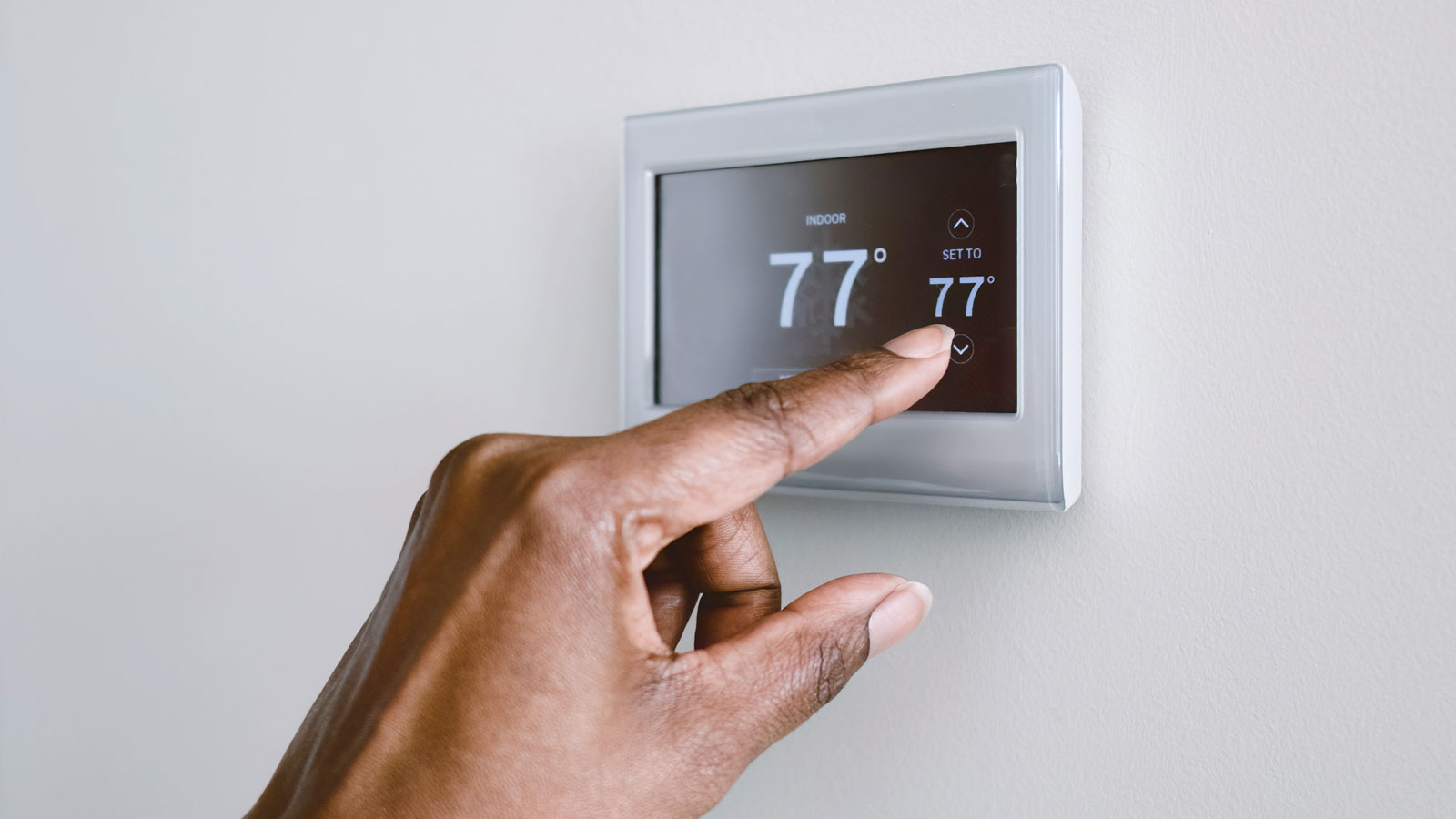We reveal the top heat pump mistakes experts see time and time again — the good news? All are easily avoidable
Once you know the most common heat pump mistakes, you can make sure you don't make any of the same blunders

Once you know the heat pump mistakes the experts see happening on a regular basis, you are halfway to ensuring that your own system will be one that proves to be a worthwhile investment.
If you are considering installing an air source heat pump, you can expect many benefits, including lower heating bills, but to ensure you enjoy all the advantages this type of heating system can offer, there are certain mistakes to avoid.
With that in mind, we reached out to some of the top experts in the field and asked them what the most common blunders they see being made are when it comes to the specification, installation and operation of heat pumps. Here's what they had to say.
1. Skipping a site survey
Is you house suitable for a heat pump? Before coming to any decision on the type, size or location of your new heat pump, it is essential that you have a thorough site survey conducted.
"One of the most common mistakes is starting a heat pump installation without a proper site survey," reveals Martyn Fowler, founder of Elite Renewables. "Every home is different. Details like insulation, window quality and the age of the building can all affect performance.
"A thorough survey allows you to calculate heat loss and design a system that delivers comfort and efficiency all year," explains Martyn. "If this step is rushed, performance issues are almost inevitable."

2. Choosing the wrong size system
Often a consequence of skipping a site survey, but sometimes just down to inexperience, getting heat pump size wrong is all too common.
Bring your dream home to life with expert advice, how to guides and design inspiration. Sign up for our newsletter and get two free tickets to a Homebuilding & Renovating Show near you.
"Arguably the most common and impactful mistake is improper sizing of the heat pump," picks up Mars Mlodzinksi, founding editor of Renewable Heating Hub. "It’s tempting for installers to oversize a unit 'just in case', or to base decisions on rules of thumb rather than detailed calculations. Unfortunately, both approaches are flawed.
"Oversizing leads to short cycling, where the system constantly turns on and off, causing inefficiency, increased wear and tear on the compressor, and higher electricity bills. It can also unnecessarily push the project into more expensive territory by triggering a requirement for a three-phase electrical upgrade.
"Conversely, undersizing can mean the system struggles to maintain comfort during cold spells, forcing it to run flat out or rely on expensive backup heaters," continues Mars.
"The solution is simple but all too often skipped – a proper heat loss calculation. This must be based on detailed surveying of the home’s construction, insulation levels, glazing and air tightness. Without this, you’re flying blind," warns Mars. "Homeowners should insist that their installer provides a thorough, room-by-room heat loss report, not just a figure plucked from a spreadsheet."

Founder of Elite Renewables, Martyn Fowler is one of the UK's leading renewable technology experts, working with heat pumps for the last 2 decades. His passion for decarbonisation matched with a deep technical experience of the technology make him one of the industry's go-to experts for all things renewable.

Renewable heating expert Mars recently self-published a homeowner's air source heat pump installation guide titled 'Bodge Buster.' He is the founding editor of Renewable Heating Hub.
3. Treating the heat pump in isolation
When specifying, installing and running a heat pump, thought needs to go into your heating system as a whole.
"A heat pump is not a plug-and-play boiler replacement. It interacts with the entire heating system (radiators, pipework, controls, etc.) and it needs all of these elements to work optimally," explains Mars Mlodzinksi.
"One of the biggest design flaws we see is undersized or poorly laid out radiators and pipework," continues Mars. "If the heat pump is matched to emitters that can’t effectively deliver low temperature heat, the system won’t perform properly.
"Radiator upgrades may be needed in some rooms, and microbore pipework from the 1980s and 1990s (while not always a dealbreaker) requires particular attention and, in some cases, extra circulation pumps to maintain flow.
"The heat pump must be viewed as part of a broader ecosystem, and installers need to be fluent in hydronics, not just electrics and refrigeration," further advises Mars. "Homeowners should ask for a full heat emitter plan and check that flow rates and pipe sizing have been considered."
4. Cutting corners on installation
Installation by a qualified and experienced engineer is absolutely essential if you want to ensure you don't experience any issues down the line. Trying to scrimp on heat pump installation costs is often a false economy.
"Even a perfectly specified and designed system can fail if the installation is poor," explains Mars Mlodzinksi. "Sadly, we come across far too many systems with bad plumbing, missing insulation, pointless buffer tanks, incorrect electrical work or units installed in suboptimal locations.
"A common issue is inadequate lagging, especially on outdoor pipework," continues Mars. "This can lead to efficiency losses, freezing and premature wear. We also regularly see commissioning settings left at default, with flow temperatures set too high, weather compensation not activated or flow rates too low, leading to constant lockouts or faults.
"Commissioning should be a methodical, recorded process, not a 15-minute job done on autopilot," adds Mars. "Homeowners must receive full documentation, an MCS certificate (if applicable) and clear instructions on how to run and maintain the system."
5. Treating it like a boiler
If you have, in the past, relied on a gas boiler, don't expect your heat pump to work in the same way. Get to know how heat pumps work before installation.
"Heat pumps require a slight shift in how we think about heating," explains Mars Mlodzinksi. "Unlike boilers, that blast heat intermittently, heat pumps work best when running steadily and gently. This means lower flow temperatures, longer run times and embracing features like weather compensation and load compensation.
"Homeowners who treat their heat pump like a boiler, cranking the thermostat up and down, may find the system less efficient and more expensive to run than expected.
"A key part of avoiding this mistake is homeowner education," continues Mars. "Sadly, many installers leave without explaining how to use the system, what the controls do or how to optimise comfort. A proper handover is not a 'nice-to-have' – it’s essential. Features like holiday mode, legionella protection cycles and hot water temperature settings need to be understood too. Without this knowledge, homeowners risk wasting energy, damaging their equipment or voiding warranties through misuse."

6. Ignoring loud running noises
Heat pumps are not silent to run, but neither should they be so loud that they become a nuisance. If yours is rumbling away, ignoring it is a big mistake.
"While modern heat pumps are quieter than older models, incorrect siting, especially near windows, fences or neighbouring properties, can lead to issues," explains Mars Mlodzinksi.
"Installing a heat pump on anti-vibration mounts, ensuring airflow isn’t obstructed, and placing it away from bedrooms or patios makes a huge difference."
7. Neglecting maintenance needs
And, lastly, even once your new heat pump is up and running, there are still a few mistakes that could affect its overall efficiency – ignoring heat pump maintenance being a good example.
"Once a heat pump is running, it requires very little attention, but that does not mean it should be ignored," explains Martyn Fowler. "An annual service helps maintain performance, checks refrigerant levels and ensures filters and controls are in good order."
"Neglecting this step not only affects performance but can also invalidate warranties," warns Mars Mlodzinksi. "Always ensure a qualified engineer performs this service and keeps a record."

FAQs
How often should a heat pump be serviced?
One of the most common heat pump myths is that they don't last long, but this need not be the case. Regular servicing will ensure your heat pump keeps running efficiently and should avoid any issues that might be lurking from causing damage to the system.
Failing to have your heat pump serviced can also mean your warranty isn't valid.
You should have your heat pump serviced on an annual basis.
Heat pumps are very often specified as part of a wider HVAC system. If this applies to your home, be sure to familiarise yourself with the most common HVAC mistakes to avoid running into any difficulties.
Natasha was Homebuilding & Renovating’s Associate Content Editor and was a member of the Homebuilding team for over two decades. In her role on Homebuilding & Renovating she imparted her knowledge on a wide range of renovation topics, from window condensation to renovating bathrooms, to removing walls and adding an extension. She continues to write for Homebuilding on these topics, and more. An experienced journalist and renovation expert, she also writes for a number of other homes titles, including Homes & Gardens and Ideal Homes. Over the years Natasha has renovated and carried out a side extension to a Victorian terrace. She is currently living in the rural Edwardian cottage she renovated and extended on a largely DIY basis, living on site for the duration of the project.

